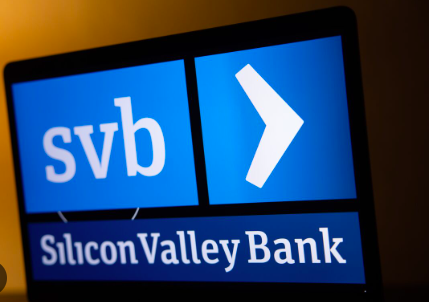Photo Courtesy of The Los Angeles Times
On March 10, Silicon Valley Bank (SVB), America’s 16th-largest lender, declared its insolvency. The sight of grim-faced finance types stiffly arrayed behind a podium recalled the horrors of 2008. Despite pundits’ comparisons of SVB to the victims of the global financial crisis fifteen years ago, it would be imprudent to directly compare the two. For one, SVB’s failure was not primarily due to irresponsibility on the bank’s part, but rather, by interest rate hikes instituted by the Federal Reserve (Fed), and panic on depositors’ parts. Should you be worried about a new financial crisis? Or is the fuss unwarranted?
SVB, as a tech-focused enterprise, was hit hard by a tidal wave of withdrawals as startup funding dips and valuations slump. To cover the costs of these withdrawals, SVB was forced to sell Treasuries – U.S. government bonds – to recoup some cash. Interest rate rises implemented to quash inflation also impacted the value of SVB’s bonds. The yield on SVB treasuries was lower than that of hot-off-the-presses Treasuries. SVB thusly was forced to sell its bond portfolio at a loss.
The bank might have survived this hit had word not leaked to clients of SVB’s difficulties, opening the floodgates on another, fatal, round of depositor withdrawals.
SVB customers need not fret over their missing millions, which the Biden Administration has promised to return. The more pressing concern is that SVB’s weakness will spread to other parts of the financial system. Already, Signature Bank, another techie lender, has failed. Markets reckon that First Republic Bank (FRB) is the next-weakest institution: its share price fell from $115 on March 8 to just over $31 on March 13. FRB, too, has a large exposure to mature Treasuries, as well as a stable skittish high-net-worth clients (holdings over $250K are not insured by the FDIC, an arm of the US government), and is in the top 25 US banks by assets. The task for FRB and other weak banks is to reassure customers, so as not to precipitate large-scale withdrawals.
This places the Fed in a delicate position. Recent data show that the place of inflation decline has slowed, hinting at a need for more interest rate rises. However, the Reserve must tread cautiously to avoid exposing more banks to the risks of cheap Treasuries.
There is no easy way for Jerome Powell, top dog at the Fed, to thread this needle. He faces pressure from markets to slow rate rises, but the Biden administration has a more aggressive view, given that high inflation affects the president’s approval rating.
Other parts of the world are also growing nervous about the failure of SVB and Signature. Japanese banks, for instance, are heavily invested in U.S. bonds. SVB had sizable business dealings in the U.K, a country already in the throes of recession. Cryptocurrency types are also worried about so-called stablecoins – digital currency where one unit is nominally worth one dollar – which have lost their peg to the USD since SVB’s failure (old-school investors are rejoicing .
The global banking system is unlikely to fail as it did in 2008, because bank portfolios are more diverse and hedged against risk. FRB and other vulnerable lenders, though, remain in dire straits, and no immediate resolution to the problem seems imminent. The government has floated new regulations for mid-tier banks with $100 billion to $250 billion dollars in assets, which may enforce greater liquidity and fewer leveraged positions – but onerous new rules designed to resolve future issues will not help banks today. The only way to prevent a run on weak banks like FRB would be for The Biden Administration to guarantee depositors’ accounts, promising to return 100% of customer cash in the event of a failure. Only this would staunch the flow of withdrawals. It remains to be seen whether the administration has the temerity to act.






